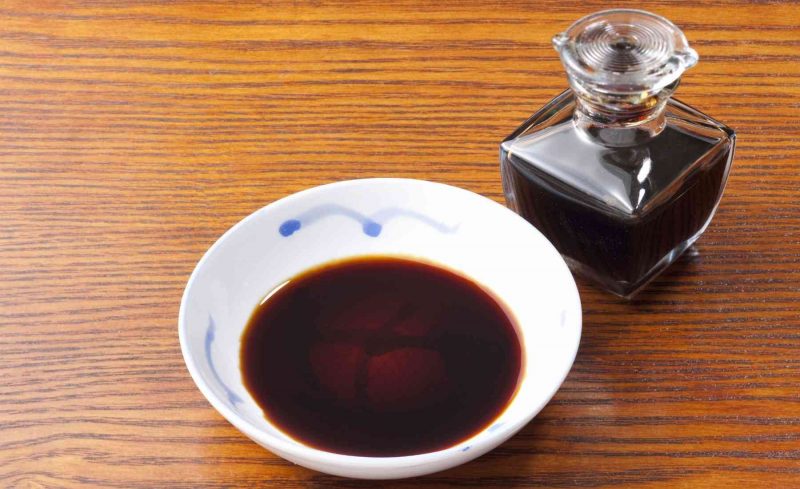As you learn to cook, you start out by following recipes to the letter. You find a recipe that looks good, and you do your best to execute the instructions step-by-step until the dish is complete. This is a great way to learn how to prepare your own food, and you’ll quickly learn what you like and what you don’t.
With experience in the kitchen, however, will come increased confidence – and you’ll start to feel more comfortable diverting from those recipes from time to time. Those diversions will often come in the form of recipe substitutions, which you might make for taste, allergy, or availability reasons.
If you happen to make a Japanese cuisine, there’s a chance it will call for miso paste. Miso paste is an extremely unique ingredient and you might not have it when dinner time arrives. But don’t give up – there are many miso substitutes you can use instead to complete your next dish.
In this post, we’ll explore some of the best miso paste substitutes, what makes for a good miso substitute, what miso paste is, and more. Let’s get started!
What is Miso Paste?
Let’s start by getting to know this ingredient a little better. Commonly used in Japanese cuisine, miso paste is a product made with fermented soybeans. There will be a few other ingredients used in the paste, depending on the brand you purchase, but fermented soybeans make up the foundation of this tasty product.
One of the impressive characteristics of miso paste is how much flavor you can add to a dish through using just a small amount of the paste. This is certainly an ingredient where a little bit can go a long way. And, since this product can last for a long time when stashed in the fridge, it’s a great addition to your kitchen and you may find many different ways to use it in your meals. Below we’ll explore some of the best miso paste substitutes
9 Best Miso Paste Substitutes
There are a couple of reasons why you may wish to use a substitute for miso paste in one of your recipes. For one thing, you simply may not have any miso paste on hand. If you have run out, you clearly won’t be able to use it in the dish, so finding a substitute of something that you have on hand is essential.
Also, you just might not like the taste of miso paste, or there may be an allergy issue. Whatever the cause, it’s helpful to know what the best miso substitutes are. The list below highlights nine options that you can turn to when a substitute is required. Some of these will work better than others in certain dishes, and they might not all be well-suited to your needs. So, view the list through the lens of what you need out of this substitution and pick the best one to try. Good luck!
Salt
That’s right – if you are wanting to keep it very simple, you could just add some salt to your recipe as a miso substitute. Of course, that isn’t going to bring any of the miso flavor profile to the dish, but your recipe might not be relying on miso to add significantly to the flavor. When the miso is going to play just a minor, backup role in the recipe, going with some salt instead should work out just fine.
Using miso as directed is going to bring some saltiness to your dish, which is why this substitution can be effective. Of course, you won’t want to directly substitute salt for miso on a one-for-one basis, as that would likely leave your finished product far too salty to be palatable. Instead, start with just a little salt and continue to add as necessary based on taste testing.

Soy Sauce
Soy sauce is another great miso substitute. This is going to deliver on the need to bring salt to the table to replace what is lost without the miso. You’ll get plenty of salt from the soy sauce, of course – in fact, you need to be careful with how much you use so you don’t overwhelm the dish. Just as with the salt suggestion above, take it easy at first and keep adding until you are happy with the taste.
One of the nice things about using soy sauce as a substitute is its long shelf life. You can keep soy sauce around for quite a long time as compared to other ingredients, and it is used in countless different recipes. So, pick up a bottle on your next trip to the grocery store and have it on hand when the need pops up.
It should be noted that the texture of your dish could be a problem when using soy sauce as opposed to miso paste. Since soy sauce is a liquid, you won’t be getting the same impact on the texture of your food that a paste will provide, so keep that in mind.
Soy sauce is also extremely affordable making is a great miso substitute.
Fish Sauce
We are keeping with the same theme on this point of a product that will deliver saltiness, although not the texture you will get from miso. This miso paste substitute will help deliver some additional flavor to your next dish.
Fish sauce is a downright funky ingredient, and some people simply can’t stand the smell of it enough to use it in their food. However, if the smell doesn’t turn you away, give this ingredient strong consideration as a replacement for miso.
On the positive side, using fish sauce is going to bring flavor in addition to salt. With that said, the flavor is not going to be the same as what miso brings, so you will be taking your dish in a different direction. That’s not necessarily a bad thing, but you should be aware that the finished product is not going to taste exactly as it would have with miso. Also, fish sauce is seriously powerful, so be careful when using this substitution. It will likely only take a bit of fish sauce to accomplish the desired outcome.
Tahini
So far, we’ve been talking about substitution options that will require you to sacrifice something in the way of texture in exchange for the saltiness you need for your dish. At this point, we are going to go in a different direction and point you toward tahini. For texture purposes, this is an excellent fit. This is also a paste, so you should be very happy with the consistency of what you are able to produce when you turn to tahini.
Of course, nothing is perfect in the world of substitutions, so it’s important to point out that there may be a flavor issue here. You may still need to add a bit of salt, and you won’t be getting anything like the flavor profile presented from the use of miso. This is going to work best when you only need a little miso, so replacing it with tahini won’t dramatically impact the final flavor of what you produce.
Related: Best Palm Shortening Substitutes
Tamari
If you want to be as true as possible to the original recipe, using tamari is an excellent option as a miso paste substitute.
You will get a good match on texture when bringing in tamari, and the flavor will actually profile pretty nicely, as well. If there is a drawback here, it is simply the availability of this product, and the chances that you have it on hand in your kitchen. Tamari is not as easy to find as some of the items we’ve pointed out earlier on the list, and you probably don’t have any available for a last-minute substitution.
Vegetable Stock
Is the miso that is called for in your recipe going into a soup? If so, you may be able to use a quality vegetable stock product as a substitute for miso (unless it was miso soup, of course, but you probably aren’t making that if you don’t want to use miso!). Vegetable stock is very easy to find, it has a long shelf life, and you can use it in your kitchen for a wide range of dishes.
Chickpea Paste
If you are willing to put in a little extra effort, and you have the time available, consider making your own chickpea paste. This will not bring the same flavor, of course, but you can mimic the texture effectively by cooking the chickpeas and then grinding them down into a paste form. Add a little salt to the paste you create and you’ll have something that can slide right in as a replacement for miso.

Dashi
This is another substitute that can work well but is also a little hard to find. You aren’t going to get a match on texture with dashi, but it has a compelling flavor profile and will deliver that umami that is so closely associated with Japanese cooking. If you tend to make a lot of Japanese-inspired recipes in your kitchen, having dashi on hand would make a nice addition to your selection of ingredients.
Adzuki Beans
Our last suggestion as a miso paste substitution is another one that falls into the category of offering good taste, if you can find it available in your local store. You’ll need to plan ahead on this one, because you probably don’t have adzuki beans on hand in your pantry. The taste of these beans is relatively mild, so they shouldn’t overpower the other flavors in your dish, and yet it can make for a nice addition that will somewhat make up for what the miso would have delivered.
Types of Miso
There are several types of miso that you can use when cooking.
White Miso
White miso is one of the more common types of miso you can find. White miso is made from soy beans and rice and it has a slightly sweet flavor.
Red Miso
Red miso is similar to white miso in that it is also made from soy beans – however red miso is also made with barley – something white miso lacks.
Related: Arugula Substitutes
How to Use Miso Paste
If you are going to use miso paste in an upcoming dish, it’s a good idea to know the basics of how this ingredient is typically used. If you’re going to substitute miso take your dish into consideration.
- Stir-fry flavor. Stir-fry meals are commonly associated with Asian cooking and using miso in a stir-fry is a great way to bring big flavor to the dish. You can simply add some miso to the stir-fry sauce you are creating, and then add that sauce during the cooking process to bring everything together nicely.
- Use as a marinade. Are you frequently looking for a way to create tasty marinades that will deliver more flavor to your proteins? Miso is a good bet here as well, but it won’t become a marinade all on its own. When combined with an oil and acid, and maybe some other flavorings as well, miso can play an important role in developing a delicious marinade.
- Salad dressing upgrade. Similar to how you can use it as a marinade, miso paste is also at home in a salad dressing. Most likely, you will only need to add a little bit of the miso to upgrade your flavors. Be sure to incorporate it thoroughly so the finished product has the appropriate texture for a salad dressing.
- Make a soup. You have likely had miso soup before, and if not, you’ve at least heard of it or seen it as an option at a local restaurant. With miso paste on hand, you can make this soup for yourself at home, and there are plenty of ways to customize this type of soup to meet your personal tastes.
The list above is only the very tip of the iceberg when it comes to uses for miso paste. Once you get started and get comfortable with this ingredient, it will become easier and easier to find new ways to put it to use. In fact, if you find that you do enjoy using miso, you can start to seek out recipes specifically that include it in their list of ingredients.
Related: Peanut Oil Substitutes
Final Thoughts on Miso Substitutes
Miso paste is a great ingredient, but it might not be right for you. Whether you need a substitute because you don’t want to use miso paste, or you just don’t happen to have any on hand, we hope this list helps you complete a successful dish without the miso. You might want to experiment with a few different substitution options so you can determine which ones work best for your needs. And remember that the best substitution for one dish might not work well for another, so having a couple of different options on hand is wise. Happy cooking!
